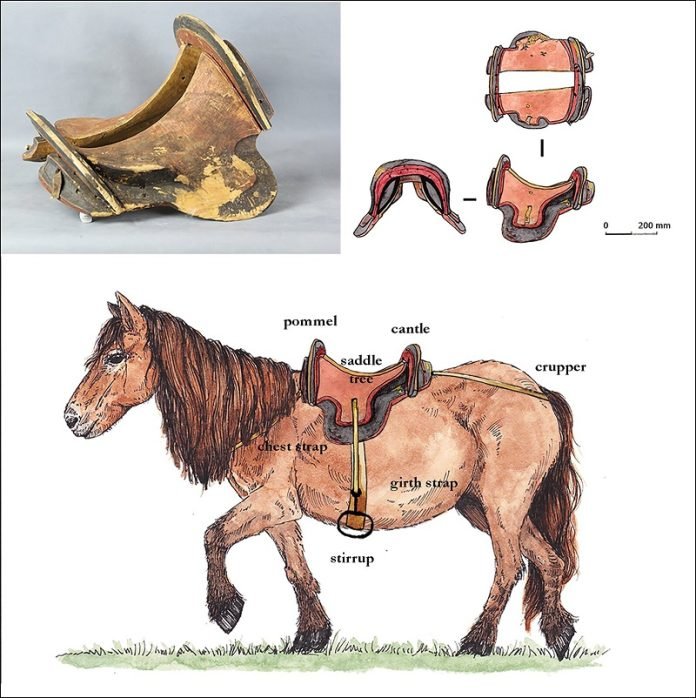
Archaeologists have uncovered the earliest known ‘true’ saddle in East Asia in a fascinating discovery that sheds light on ancient horse-riding cultures.
This find is not just an old piece of horse equipment; it’s a key to understanding how Mongolian steppe cultures might have grown powerful thanks to advancements in riding technology.
First, let’s talk about what makes this saddle special. Unlike earlier saddles, this one has a wooden frame.
This design is sturdier and more comfortable for the horse and the rider. It also allows the addition of stirrups – those loops you put your feet in when riding.
With stirrups, a rider can carry more weight and have better control over the horse. This is really important, especially in battles fought on horseback.
The study’s authors, including experts from Asia, Europe, and North America, explain that saddles and stirrups weren’t always used in horse riding.
Their development changed the way people fought wars and had a huge impact on societies across Eurasia. But until now, we didn’t know much about where and when this technology first started.
The saddle in question was found in a burial site inside the Urd Ulaan Uneet cave in western Mongolia. It was buried alongside a human and a horse, which is pretty interesting in itself.
The researchers used radiocarbon dating to figure out how old it was. They discovered that the saddle dates back to AD 267 and 535. That makes it the oldest known saddle of its kind in East Asia!
But there’s more. The team also looked at the materials used to make the saddle. They found that the leather came from domestic horses bred locally, and the wood was from nearby birch trees.
This suggests that the people living in the eastern Eurasian steppe used this new technology and were probably responsible for creating and improving it. Other discoveries from around the same time in Mongolia include early versions of metal stirrups.
Why is this important? Well, the time when this saddle was used matches up with the rise of the Rouran Khaganate.
This was a powerful group that controlled a big part of Inner Asia. They were known for their military strength, and this advanced saddle technology likely played a big role in their success.
The Rouran Khaganate conquered many areas through warfare, and it might not have been possible without these improved saddles and stirrups. So, this saddle isn’t just an old artifact; it’s a clue to how a major part of Asian history unfolded.
The researchers believe that these advancements in horseback combat helped shape the early political structures of the steppe.
Using frame saddles and metal stirrups might have given the Rouran a technological edge over their rivals.
This discovery opens up new possibilities for understanding the history of East and Central Asia and the role of horse-riding cultures in shaping it.



